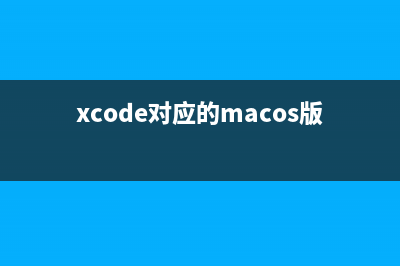位置: IT常识 - 正文
HTTP Tunneling (HTTP Proxy Socket Client)
编辑:rootadmin推荐整理分享HTTP Tunneling (HTTP Proxy Socket Client),希望有所帮助,仅作参考,欢迎阅读内容。
文章相关热门搜索词:,内容如对您有帮助,希望把文章链接给更多的朋友!
HTTP TunnelingHTTP is a text-based protocol to retreive Web pages through a Web browser. Mostly if you are on a LAN connection, you are behind a proxy server; this proxy server has one HTTP proxy running on some defined port. In your Internet Explorer's Connection option, you specify LAN settings as required. This proxy server is definitely running on a text-based protocol and you can only get HTTP-related data from the outside network, right!! Well, there is a small loophole from which you can go through HTTP and connect to the outside world and get any data you want in binary protocol, or even your own protocol. It's through HTTPS.
HTTPS ExplanationIn HTTPS, data is transferred from browser to server and server to browser in a secure manner. It's a binary protocol; when it goes through a proxy, the proxy doesn't understand anything. The proxy just allows a binary stream to open and let both server and client exchange the data. Now, we can fool the proxy server and connect to any server and exchange data. The proxy server will think that we doing some secure HTTP session.
For HTTPS, your browser connects to a proxyserver and sends a command.
CONNECT neurospeech.com:443HTTP/1.0<CR><LF>HOST neurospeech.com:443<CR><LF>[... other HTTP header lines ending with<CR><LF>if required]><CR><LF>// Last Empty LineThen, the proxy server treats this as some HTTP Secure Session, and opens a binary stream to the required server and port as defined. If a connection established, the proxy server returns the following response:
HTTP/1.0200ConnectionEstablished<CR><LF>[.... other HTTP header lines ending with<CR><LF>..ignore all of them]<CR><LF>// Last Empty LineNow, the browser is connected to the end server and can exchange data in both a binary and secure form.
How to Do ThisNow, it's your program's turn to fool the proxy server and behave as Internet Explorer behaves for Secure HTTP.
Connect to Proxy Server first.Issue CONNECT Host:Port HTTP/1.1<CR><LF>.Issue <CR><LF>.Wait for a line of response. If it contains HTTP/1.X 200 , the connection is successful.Read further lines of response until you receive an empty line.Now, you are connected to outside world through a proxy. Do any data exchange you want.Sample Source Code// You need to connect to mail.yahoo.com on port 25// Through a proxy on 192.0.1.1, on HTTP Proxy 4480// CSocketClient is Socket wrapping class// When you apply operator << on CString, it writes CString// To Socket ending with CRLF// When you apply operator >> on CString, it receives// a Line of response from socket until CRLFtry{CStringRequest,Response;CSocketClientClient;Client.ConnectTo("192.0.1.1",4480);// Issue CONNECT CommandRequest="CONNECT mail.yahoo.com:25 HTTP/1.0";Client<<Request;// Issue empty lineRequest="";Client<<Request;// Receive Response From ServerClient>>Response;// Ignore HTTP Versionint n =Response.Find(' ');Response=Response.Mid(n+1);// Http Response Must be 200 onlyif(Response.Left(3)!="200"){// Connection refused from HTTP Proxy ServerAfxMessageBox(Response);}// Read Response Lines until you receive an empty line.do{Client>>Response;if(Response.IsEmpty())break;}while(true);// Coooooooool.... Now connected to mail.yahoo.com:25// Do further SMTP Protocol here..}catch(CSocketException* pE){ pE->ReportError();}Library Source Code
The Dns.h file contains all DNS-related source code. It uses other libraries, as SocketEx.h, SocketClient.h, and NeuroBuffer.h.
CSocketExSocket functions as a wrapper class. (CSocket is very heavy and unreliable if you don't have the exact idea of how it works.) All the functions are of same name as CSocket. You can use this class directly.
CSocketClientDerived from CSocketEx and throws proper exceptions with details of Winsock errors. It defines two operators, >> and <<, for easy sending and receiving; it also changes network to host and host to network order of bytes if required.
CHttpProxySocketClientDerived from CSocketClient, you can call the SetProxySettings(ProxyServer,Port) method and set proxy settings. Then, you can connect to the desired host and port as you need. The ConnectTo method is overridden and it automatically implements an HTTP proxy protocol and gives you a connection without any hassle.
How to Use CHttpProxySocketClient// e.g. You need to connect to mail.yahoo.com on port 25// Through a proxy on 192.0.1.1, on HTTP Proxy 4480// CSocketClient is Socket wrapping class// When you apply operator << on CString, it writes CString// To Socket ending with CRLF// When you apply operator >> on CString, it receives// Line of response from socket until CRLFtry{CHttpProxySocketClientClient;Client.SetProxySettings("192.0.1.1",1979);// Connect to server mail.yahoo.com on port 25Client.ConnectTo("mail.yahoo.com",25);// You now have access to mail.yahoo.com on port 25// If you do not call SetProxySettings, then// you are connected to mail.yahoo.com directly if// you have direct access, so always use// CHttpProxySocketClient and no need to do any// extra coding.}catch(CSocketException* pE){ pE->ReportError();}Note: I usually don't program in the form of .h and .cpp different files, because using them the next time somewhere else is a big problem because you must move both files here and there. So, I put all the code in my .h file only; I don't write to the .cpp file unless it's required. You need to copy only the SocketEx.h, SocketClient.h, and HttpProxySocket.h files into your project's directory, and add line
#include"HttpProxySocket.h"after your
#if !defined(.....and so forth code of your Visual Studio-generated file. If you put anything above this, you will get n number of errors.
DownloadsDownload source - 17 Kb
Note: I usually don't program in the form of .h and .cpp different files, because using them the next time somewhere else is a big problem because you must move both files here and there. So, I put all the code in my .h file only; I don't write to the .cpp file unless it's required. You need to copy only the SocketEx.h, SocketClient.h, and HttpProxySocket.h files into your project's directory, and add line
#include"HttpProxySocket.h"after your
#if !defined(.....and so forth code of your Visual Studio-generated file. If you put anything above this, you will get n number of errors.
上一篇:实现自己的http server loop_in_codes C++博客
下一篇:驱动开发:内核LDE64引擎计算汇编长度(驱动开发做得长久吗)

























